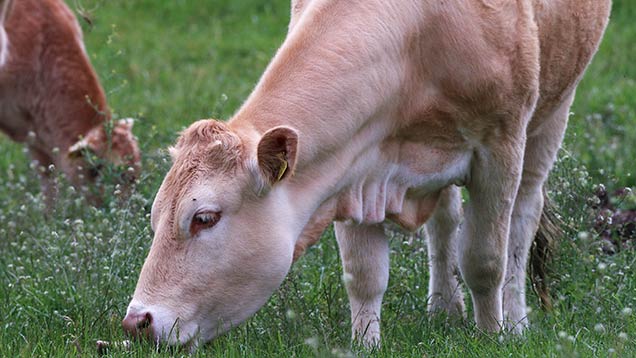Nadis forecast warns cattle farmers of heightened worm risk
 © Tim Scrivener
© Tim Scrivener Cattle farmers are being urged to create a grazing plan now to avoid the increased risk of worms this summer.
It is the warm, dry spring that has affected cattle parasites, says vet Peers Davies.
“We are going to see larger numbers of infectious larvae on pasture earlier on in the year and this means they will multiply more quickly. So we are going to have a larger risk of parasitic disease in the late summer to early autumn, when we would normally see most cases of scouring and ill thrift in calves.”
Early signs of gutworms in summer/autumn
- Loss of appetite
- Sudden and profuse green diarrhoea in the late summer/early autumn period
- Affects most animals in a group within days
Treatment and prevention
- Prevention is far more cost-effective than treatment
- Strategic wormer use must be built into a worm control plan – the product will depend on worm history and type of stock
- Avoid grazing contaminated pasture during the peak summer season. Use fresh, ungrazed pasture (such as silage aftermaths)
- Reduce routine worming by monitoring FECs and animal growth rates.
- Worm stock susceptible to hibernating larvae at housing
Source: Eblex Beef Diseases Directory
See also: Top tips for managing suckler cows this breeding season
Mr Davies advises farmers to make a grazing plan to avoid heavily contaminated pastures – especially with youngstock, which are at high risk.
“Think how to use safe grazing and pasture rotation to use silage aftermaths for youngstock in their first grazing season. This will allow a break from the build-up of parasite infection at pasture.”
Preventative treatments are also needed to break up the development of resistance and the level of parasite challenge the stock are facing, he adds.
Lungworm
As the weather is warming up, risk of lungworm is also on the increase, says Mr Davies.
“This disease can be seen at any time during the grazing season, but it is the most unpredictable of all parasites,” he warns.
It is particularly a problem when wet weather follows a long hot, dry spell, as large numbers of infectious larvae will be excreted onto pasture over a very short period of time.
Mr Davies says: “Clinical signs and disease will appear very soon afterwards, so vigilance is absolutely essential with lungworm in order to prevent quite serious losses.”
Prevention through vaccination is possible and is very effective. Treatment is also very effective if given promptly after infection. Without it, there could be high numbers of dead animals over a very short period of time, says Mr Davies.
See also: Nadis parasite forecasts and disease updates
Early signs of lungworm infection
- Panting
- Frequent coughing, especially after short periods of exercise
- Reluctance to move
- Standing with head down and neck extended, often gasping for breath
Prevention and control
- A low dose of lungworm early in the season is needed to stimulate immunity each year, the strategy for this should be agreed with the vet
- Vaccination before first grazing should provide immunity for six months, costing £5-£7 a head. This in combination with good management practice is the best insurance against lungworm
- Cattle grazing moderately infested pastures will develop natural immunity through exposure to the lung infection. However, strategic worming treatment is needed during the grazing period to prevent disease development
- Avoid overworming early in the season as lungworm can also strike during late grazing
Diagnosis and treatment
- Diagnosis is based on clinical symptoms outlined above and may also be confirmed through laboratory analysis of dung showing the presence of larvae
- On identification, prompt worming treatment is essential, using a product recommended by the vet
- Antibiotics treatment may be required where secondary infection has occurred
Source: Eblex Beef Diseases Directory
